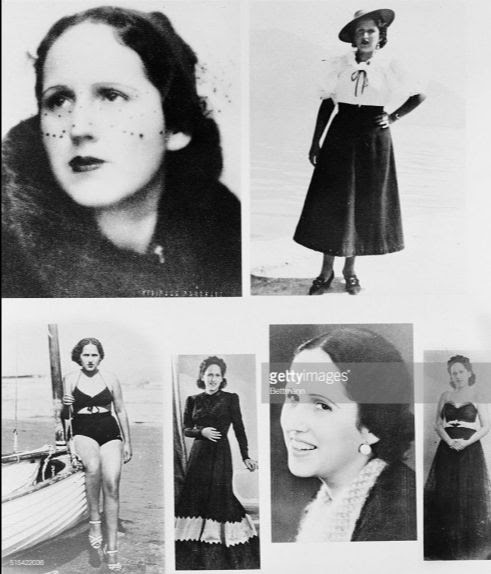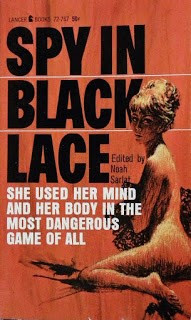Wednesday, June 16, 2021 – BIG TIME GAME HUNTER WITH OTHER MOTIVES


FROM THE ARCHIVES
WEDNESDAY, JUNE 16, 2021
391st ISSUE
Spies on
Roosevelt Island
Stephen Blank
Countless people have lived and many have died on our Island. But how about a notorious Nazi spy? There’s a thriller. So lean back and enjoy a tale of spies, espionage, a femme fatale, a hero and the FBI, a tale that ends on our Island – the story of Frederick “Fritz” Joubert Duquesne.
The Duquesne Spy Ring is the largest espionage case in the United States history that ended in convictions. The German agents who made up the Duquesne Ring were placed in key jobs in the United States to get information that could be used in the event of war and to carry out acts of sabotage. After a lengthy investigation by the FBI, 14 members of a German espionage network headed by Duquesne were convicted (19 others had pleaded guilty) on December 13, 1941, just days after Germany declared war on the US.
The Spy Leader: Frederick “Fritz” Joubert Duquesne (1877–1956) was a South African Boer and German soldier, big-game hunter, journalist, and spy.

Captain Frederick Duquesne ca 1900 https://roughdiplomacy.com/convicted-members-of-duquesne-spy-ring/
Duquesne fought for the Boers in the Second Boer War and was a German secret agent during both World Wars. He led spy rings and carried out sabotage missions in South Africa, Great Britain, Central and South America, and the United States. He went by many aliases, fictionalized his identity and background on multiple occasions, and operated as a con man. He was also adviser on big game hunting to President Theodore Roosevelt, a publicist in the movie business, a journalist, a fictional Australian war hero, and head of the New Food Society in New York.
After a half century of this speckled career, in spring 1934, Duquesne became an intelligence officer for the Order of 76, an American pro-Nazi organization. Admiral Wilhelm Canaris, head of Germany’s military intelligence, knew Duquesne from WW I, and instructed his new chief of U.S. operations, Col. Nikolaus Ritter, to contact him. Ritter had been friends with Duquesne and the two spies reconnected in New York in December 1937. Ritter employed several other successful agents across the US, most notably Herman Lang, who delivered blueprints for the highly secret Norden bombsight. He also recruited William Sebold and sent him to New York to set up a shortwave radio-transmitting station to establish contact with the German shortwave station abroad. Sebold was instructed to use the code name TRAMP and to contact a fellow agent, Fritz Duquesne.
Dequesne soon headed a large spy network in the US. Its job was to find holes in American military forces and preparedness before the US entered the war and to find ways to destabilize the country and its morale. The information that members of the ring passed forward supported acts of domestic terrorism and sabotage as well as industrial and military espionage. Working from a phony business office at 120 Wall St., methods were often crude but effective: Duquesne would contact defense companies such as Grumman Aircraft Engineering, requesting photos and plans of its developing technology for “lectures” he was giving. Astonishingly, the material would be sent with “warm regards.” From his hands, it would pass to Nazi eyes. One of his agents opened a restaurant and used his position to get information from his customers; another worked on an airline so that he could report Allied ships that were crossing the Atlantic Ocean; others worked as delivery people as a cover for carrying secret messages.
Duquesne’s luck finally ran out in 1941 when he was arrested by the FBI as the leader of the biggest spy network in US history after extensive surveillance of his group’s activities. On June 28, 250 agents pulled spies from ships, bars and beds. Of the 33 charged, 16 pleaded guilty, while the others went to trial and were convicted. Duquesne and Lang got hit hardest, with 18-year sentences each.
The Hero:
William G. Sebold, who had been blackmailed into becoming a spy for Germany, became a double agent and helped the FBI gather evidence.

Agent William Sebold (pictured with his wife Ellen). (Courtesy of Camerer)
Sebold, a German immigrant, was a naturalized American citizen when he returned to Germany to visit his mother in 1939. The Nazis, impressed with a low-level job Sebold once held in the aircraft industry, were determined to put a spymaster in place in Manhattan. Nikolaus Ritter needed a man in place to receive contraband documents and to pass along information gleaned by fifth column spies floating around Manhattan beer halls and docks. Sebold was coerced into the position — but before he even left Germany, he contacted the US Consulate in Cologne, informing it of the traitorous role he was being forced to assume. FBI agents met Sebold when his ship, the Washington, docked at Pier 59 on Feb. 8, 1940, and escorted him to headquarters.
There he repeated his incredible tale of being trained as a spymaster and provided the names of spies already at work. His story was relayed directly to FBI Director J. Edgar Hoover, who in turn informed President Franklin D. Roosevelt.
For nearly two years, the FBI ran a shortwave radio station in New York for the ring. They learned what information Germany was sending its spies in the US and controlled what was sent to Germany. After Sebold set up his own dummy office in Times Square, he stumbled on another ring operating out of New York. Two spies, a butcher and baker employed by the cruise ship Manhattan, functioned as couriers between Berlin and New York. Another confederate, Paul Fehse, was in charge of the marine division. He and an associate who worked the Brooklyn boat basin wandered the docks picking up information on shipping movements to feed U-boats their targets. (A recent book by Rhodri Jeffreys-Jones, THE NAZI SPY RING IN AMERICA, Hitler’s Agents, the FBI, and the Case That Stirred the Nation, Georgetown University Press, 2020, looks in depth at all of this.)
I promised you a femme fatale: Enter Lilly Stein.
A beautiful young Austrian, a Jewish immigrant, Lilly in the early 1930s decided like so many other starving young European women to become a prostitute. But Lilly became a “high-class” whore and set her sights on bigwigs across Europe. Soon she was wealthy herself, entertaining men from Austria to Paris. Then one day in 1938 she was contacted by the Gestapo and drafted into service. Now Lilly would be a spy for them, acting as a courier. But Lilly always struggled to be the best and threw herself into spycraft, eventually becoming a capable spy herself – in the bedroom. The head of FBI operations in New York worried that Sebold had “an honesty complex” that might botch things up, but he proved immensely skilled and unflinching in the field — particularly when he came up against femme fatale Lilly Stein, who tried to seduce him. Always sexually ready — one FBI agent described her as a “good-looking nymphomaniac” — her job was to prowl nightclubs looking for men who would pillow-talk about war developments or deals in industry and finance. She made “advances” on Sebold during one of their late-night meetings, though he refused. When she was arrested with the rest of the gang, it was said that she propositioned a federal agent.


Lace, edited by Noah Sarlat, 1964, Lancer Books. The first chapter tells Lilly Stein’s story. Photos of Lilly Stein, https://roughdiplomacy.com/convicted-members-of-duquesne-spy-ring/
The end
The 64-year-old Duquesne did not escape this time. He was sentenced to 18 years in prison, with a 2-year concurrent sentence and $2,000 fine for violation of the Foreign Agents Registration Act. He began his sentence in Leavenworth Federal Penitentiary in Kansas, along with Hermann Lang. In 1945, Duquesne was transferred to the Medical Center for Federal Prisoners in Springfield, Missouri, due to his failing physical and mental health. In 1954, he was released owing to ill health, having served 14 years. His last known lecture was in 1954 at the Adventurers’ Club of New York, titled “My Life – in and out of Prison”.
Stein went to prison for 12 years. When last heard from, she was working at a luxury resort near Strasbourg, France.
Sebold’s own end was much sadder. He entered an early version of the witness protection program, moving to California and taking work at the Benicia Arsenal. But ill health plagued him, and he had trouble keeping a job. For a time he tried to make a go of it as a chicken farmer. Then paranoia set in — and it wasn’t entirely unfounded. From time to time he would receive word from family back in Germany that Nazis still had him in their sites for reprisal. Impoverished and delusional, he was committed to Napa State Hospital in 1965. Diagnosed with manic-depression, he died there of a heart attack five years later at 70.
Oh yes, Welfare Island. Fritz Duquesne died at City Hospital on Welfare Island, in New York City on 24 May 1956 at the age of 78 years.
OK, just one spy. If I’ve misled you, apologies. But he did die here. And it was a pretty good story.
Stephen Blank
RIHS
June 9, 2021
WEDNESDAY PHOTOS OF THE DAY
SEND OUR SUBMISSION TO
ROOSEVELTISLANDHISTORY@GMAIL.COM

TUESDAY PHOTO OF THE DAY
ELEANOR ROOSEVELT VOTES
GLORIA HERMAN GOT IT RIGHT
DID YOU VOTE?

All image are copyrighted (c) Roosevelt Island Historical Society unless otherwise indicated
STEPHEN BLANK
Sources
https://www.wikiwand.com/en/Duquesne_Spy_Ring
https://www.fbi.gov/history/famous-cases/duquesne-spy-ring
https://roughdiplomacy.com/convicted-members-of-duquesne-spy-ring/FUNDING PROVIDED BY ROOSEVELT ISLAND OPERATING CORPORATION PUBLIC PURPOSE GRANTS CITY COUNCIL REPRESENTATIVE BEN KALLOS DISCRETIONARY FUNDING THRU DYCD


Copyright © 2021 Roosevelt Island Historical Society, All rights reserved.Our mailing address is:
rooseveltislandhistory@gmail.com

Leave a comment